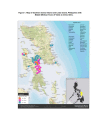Prevalence of Hypertension among Patients Attending Mobile Medical Clinics in the Philippines after Typhoon Haiyan
- PMID: 28286697
- PMCID: PMC5325669
- DOI: 10.1371/currents.dis.5aaeb105e840c72370e8e688835882ce
Prevalence of Hypertension among Patients Attending Mobile Medical Clinics in the Philippines after Typhoon Haiyan
Abstract
Introduction: On November 8, 2013, Super Typhoon Haiyan struck the Philippines, causing a humanitarian emergency. According to the World Health Organization, non-communicable diseases (NCDs), also known as chronic diseases, are the leading cause of death and disability around the world. NCDs kill 38 million people each year. Sixteen million NCD deaths occur before the age of 70; 82% of which occurred in low- and middle-income countries. NCDs are further exacerbated during a crisis, and addressing them should be a concern of any medical disaster response.
Methods: We conducted a retrospective observational study to determine the prevalence of hypertension among patients seeking medical care at mobile medical clinics after Typhoon Haiyan in the Philippines.
Results: A total of 3,730 adults were evaluated at the mobile medical clinics. Analysis of the medical records revealed that the overall prevalence of hypertension among adult patients was 47%. Approximately 24% of adult females and 27% of adult males were classified with stage 2 Hypertension.
Conclusions: Evidence-based guidelines on the management of hypertension and other NCDs (diabetes mellitus, cardiovascular disease, chronic lung disease and mental health) during humanitarian emergencies are limited. Clinical care of victims of humanitarian emergencies suffering with NCDs should be a critical part of disaster relief and recovery efforts. We therefore recommend the development of best practices and evidence based management guidelines of hypertension and other NCDs in post-disaster settings.
References
-
- 15th World Congress on Disaster and Emergency Medicine (WCDEM), Amsterdam, The Netherlands, May 2007
-
- Horn, R. Disaster Preparedness and the Aging Population: Discussion of a Novel Supplementary Unit for Chronic Disease to the Interagency Emergency Health Kit. Johns Hopkins Bloomberg School of Public Health, capstone paper (unpublished)
LinkOut - more resources
Full Text Sources
Other Literature Sources




